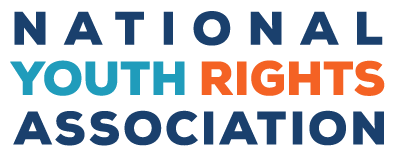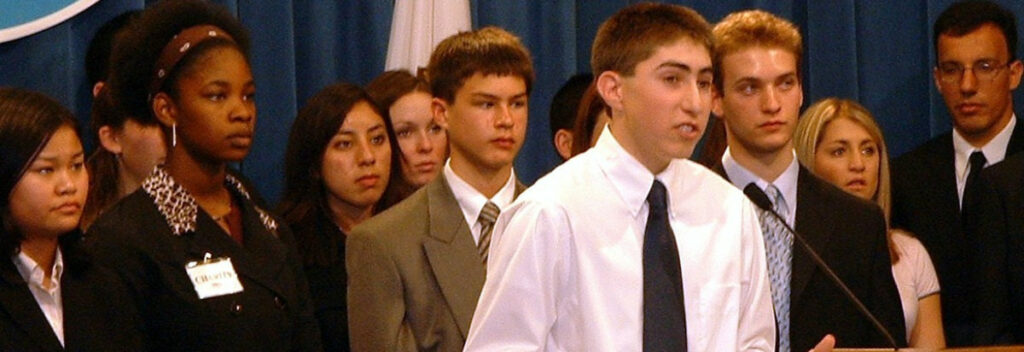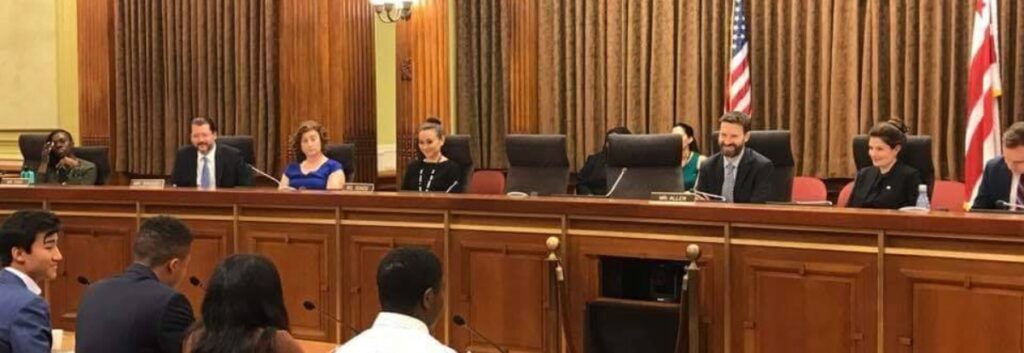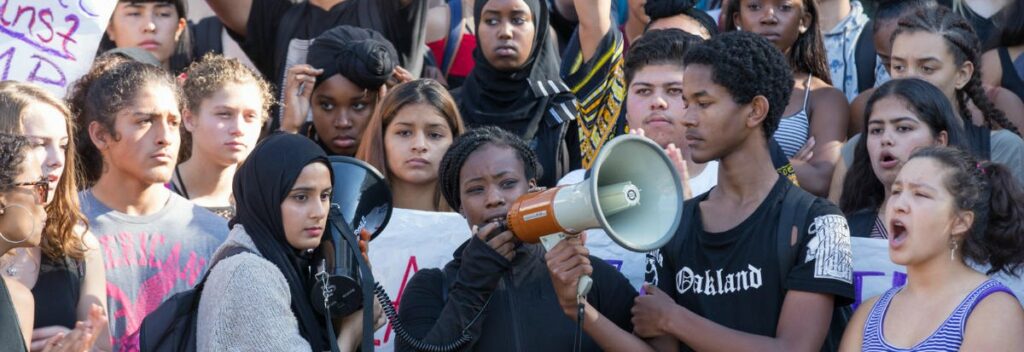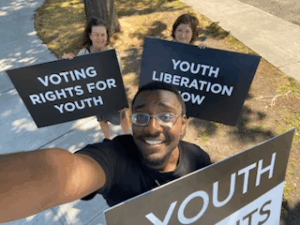Media coverage is extremely important for promoting your issue or campaign. Interviews, news articles, and press releases are all crucial tools of publicity for your NYRA Node to take advantage of when promoting awareness and action.
- Media coverage spreads your message. Most people have never heard of youth rights, or are unsure what it means. Part of our work, and the work of our Nodes, is to make sure that the public understands the reasons we advocate for young people. Involving the media not only informs your local community about your campaign, but allows your message to reach a wide range of people who may have never heard of youth rights.
- Media coverage garners support. Making headlines in a positive way will bring members right to your front doorstep. If the media never covered a single story on us, then we would never have the level of support that we do now. Continually making positive headlines and spreading our message means that we have the potential to gain many new supporters. In addition to letting other know about your campaign and youth right in general, media coverage, if maneuvered correctly, can help to paint you in a positive light. Presenting your Node as a passionate and knowledgeable organization will put a human face to your cause. This will encourage people to identify with you and help gain support.
- Media coverage exhibits authority. Through continuous presence in the media, your Node can demonstrate authority in the community. Your Node will begin to be taken seriously in the eyes of not only other news outlets, providing further media coverage, but also in the eyes of supporters and critics across the nation.
Making your story appealing to the media
- Is it newsworthy? Not everything that your Node does will be newsworthy. Media outlets will not report on an organizational Node meeting. Outlets will, however, cover events that you and your Node create, protests and rallies you organize, and press releases you distribute. At the end of the day, media outlets mainly care about news. Make sure that your Node participates in newsworthy activities from time to time.
- If there is conflict, what is the impact it has on society? Stories that deal with a conflict of some sort, and the impact it has on society, are especially intriguing to media outlets. In order to bring about a change on the views of youth, conflicts with other organizations will come up. The impact that is placed on society because of these conflicts are sure to grab the media’s eye. Keep it in the back of your head while dealing with the media the conflict and impact of the story at hand.
- Is your story keeping up with the time? People do not read CNN or The New York Times for dated news. In order to keep people informed about what is going on around the country and the world, media outlets tend to cover stories that keep with the times. Rarely will a media outlet cover a story that is a month old. Make sure that your Node stays active and continues to make progress to ensure the attention of media outlets is brought to your doorstep.
Contacting the media
In order for any type of release to have an impact, you must contact the right people. Over time, your organization will find media outlets that consistently show interest in your event and progress. Building lasting relationships with these outlets, and the specific people within them that cover your Node, is the key to positive media.
- Identify which news outlets to distribute to. Knowing and being aware of your audience will make media distributions much more effective. Do they do televised newscasts, write articles on a website, or run a blog? This will help determine the tone and style you should take while considering who to contact. Make sure that all the intended outlets line up with your organization. For example, your Node should not plan to distribute any releases to tech companies or blogs about cooking. Release information with the intention of distributing it to a major or local news station, or another appropriate outlet.
- Use a tone that matches the media outlet. If your intended outlets are mainly televised, then plan the outreach in a conversational tone so that it can be easily read by the newscaster. The outreach needs to both flow and be concise in order for the outlet to easily quote it. If the intended outlets are mainly newspapers or blogs, then you can contact them in a much more factual, straightforward tone and style.
- Initial contact with a newsroom is simple. Once you have your release or advisory ready, you can send it to the newsroom via an email or a fax. Most contact information can be found on their official website. After doing so, make sure you follow up with someone in the company to make sure they have received and read it. This is vital to maintaining and building a relationship with the media. Keep in mind that newsrooms receive many stories and releases in a single day. Following up can make or break your story making it to a headline.
- Who should you contact? The key to getting the media work for you is building relationships and networking with the media. Over time, your Node will get to know reporters. Make sure to obtain their information and keep in touch; this will make getting them to write a story about your release or advisory much easier. Once you have their personal information and a solid relationship built up, you can email or call them directly once you have a release ready to distribute. Even when you don’t have release ready, reporters are a great contact to utilize when in need of advice, or to even just talk about business with. Reporters that you have cultivated strong relationships will be sure to cover your material once it is ready, so be sure to keep them in mind! Finally, it is always smart to keep a running list of all your contacts. Never let a potential outlet slip through your fingertips.
Press Releases
A press release is a concise document that can be written by your Node or group to inform other on news or on a campaign you are working on. Often they are written by public relations professionals, but you can feel comfortable writing them as well. When written and implemented well, press releases can attract a lot of positive media coverage, resulting in free positive advertising for your Node. Through some simple changes, press releases can be formed into media advisories. These are simply invitations to the media regarding upcoming events you might be holding. Use these suggestions to help you write an effective press release or advisory:
- Write the release as if you were the reporter. The idea of a press release is too make the job easy for members of the media. Journalists use an “inverted pyramid” style, where the most important information will be featured at the beginning of the release, and the least important information will be featured at the end of the release:
- Attention-grabbing headline that tells the story (don’t use clickbait)
- Opening paragraph answering who, what, why, when, where and how. It should contain all of the absolutely necessary information. The audience should be able to get the gist of the release in the first few sentences.
- Mid-section containing additional information that is helpful, but not necessary. Contains quotes.
- Final section has the least important information.
- Keep the press release short and concise. Do not lengthen it by adding unnecessary information and details. Extra information raises more questions than it answers, and runs the risk of losing the interest of reporters. Press releases are usually around 300-400 words. Don’t add filler information.
- Locate effective quotes and statements from officials within your organization and try to find an emotional angle. This intrigues news outlets and keeps them interested.
- Include quotes and emotionally evocative statements. This grabs the audience’s attention and keeps them interested. This provides a “Human-interest” angle.
- Write the press releases in a positive light – regardless of whether or not it being written to defend the company in the midst of crisis or to attract the press.
- Make sure the press release is thoroughly edited by a set of fresh eyes, just as any piece of writing needs to be.
- Contact your intended outlets directly, through e-mail or fax. If you or your organization has any personal, direct contacts to any of your intended outlets, contact them directly to ensure the release is read by an actual media contact.
Media Interviews
From time to time, a simple article on a recent press release may not be enough for a reporter to cover. If they need more material, they may reach out to you or someone within your Node to schedule an interview. Many begin to shake at the mere mention of an interview, but there are steps to take to ensure everything goes smooth.
- The basics. When the reporter initially calls to schedule an interview, do not freak out. If you are busy in that specific moment and cannot schedule an interview immediately, the first question you should ask is if they are on a deadline. If they are, they will quickly lose interest in the story altogether if you cannot meet in a timely manner. You, and anyone else involved in the interview, should also make sure that they are comfortable with all of the information being covered. The goal is to be able to bring as few notes as possible, and keep the information in your head. A conversational tone and open dialogue is key in an interview. No one enjoys a robotic-sounding interview. Let the reporter suggest a location to hold the interview. They called you, so be sure to give them the common courtesy of choosing the location. When you do finalize a location, make it a point to be on time. This may sound like common sense, but it can look very unprofessional if you are late.
- The interview. Public speaking, interviewing, and even just talking with someone new can give a lot of people anxiety. In an interview, try your best to relax and focus on the information. Think of them as just conversations between you and the reporter. Avoid saying “um”, or “so, yeah.” to end thoughts. Not only does this sound unprofessional, but it leads the interviewer to believe you don’t really know what you’re talking about. Keep in mind that you already have a message you are trying to send to the public. If and when necessary, manipulate the reporter’s question to turn it back around to this message. This means that if the interviewer asks a question that you don’t necessarily like, or find useful to your message, then turn it around and answer it in a manner that communicates your desired message.
- Other considerations. Regardless of whether or not the interview is being video recorded or not, be sure to dress in professional attire. This sends the message that you are serious about the interview to both the audience and the reporter. Be sure to clarify everything you say. Don’t be vague in answering your questions, because the answer you give can be easily manipulated by the media. The thought of clarity can even be as simple as making sure you introduce yourself properly. Be sure to state any relevant information, such as your name, age, organization, school, or anything else that may be relevant in the interview. Keep in mind that not only press releases and media advisories will attract the attention of the media. If you organize a protest or a rally, they will most likely come to you regardless. Be prepared for this, and if and when that time comes, be ready to elect a spokesperson.
Using Social Media
Many people today do not get their news by reading the newspaper or watching the evening news. For the most part, people see online articles shared on websites such as Twitter, Facebook, Reddit, Tumblr, or other social media sites. Many people, especially young people, are very connected and spend a lot of time using technology in their daily lives. Utilizing social media campaigning has the potential to garner support with our target demographic.
- What should you be sharing on social media? If your Node has social media pages, which it should, there are a number of different topics you could be talking about on your page. Any newsworthy topic should be posted to the page, whether that be an article an outlet has written about your Node, or some advancements that were made behind the scenes. One of the strengths that social media has behind it is the ease of starting a discussion. Posting questions, polls, or simple statements that can spark a discussion in the replies or comments is a great way to spread our message. Statistics and recent reports always make for great content to share. After all, the facts don’t lie! Finally, keep in mind that social media is essentially free advertising. One viral post has the power to go to international headlines in minutes. Be aware of everything you post.
- What should you not be sharing on social media? Avoid getting too involved in the comments section after you post. The goal is to start a discussion, not an argument. Before posting an article or an external source, make sure the source is reliable and not clickbait. Misleading potential readers is not good for garnering support. This may sound like common sense, but also avoid sharing any information that distracts from our message. Focus on what is important, and the topic at hand.
Check out our Promoting Youth Rights Online page for more resources about using social media.
